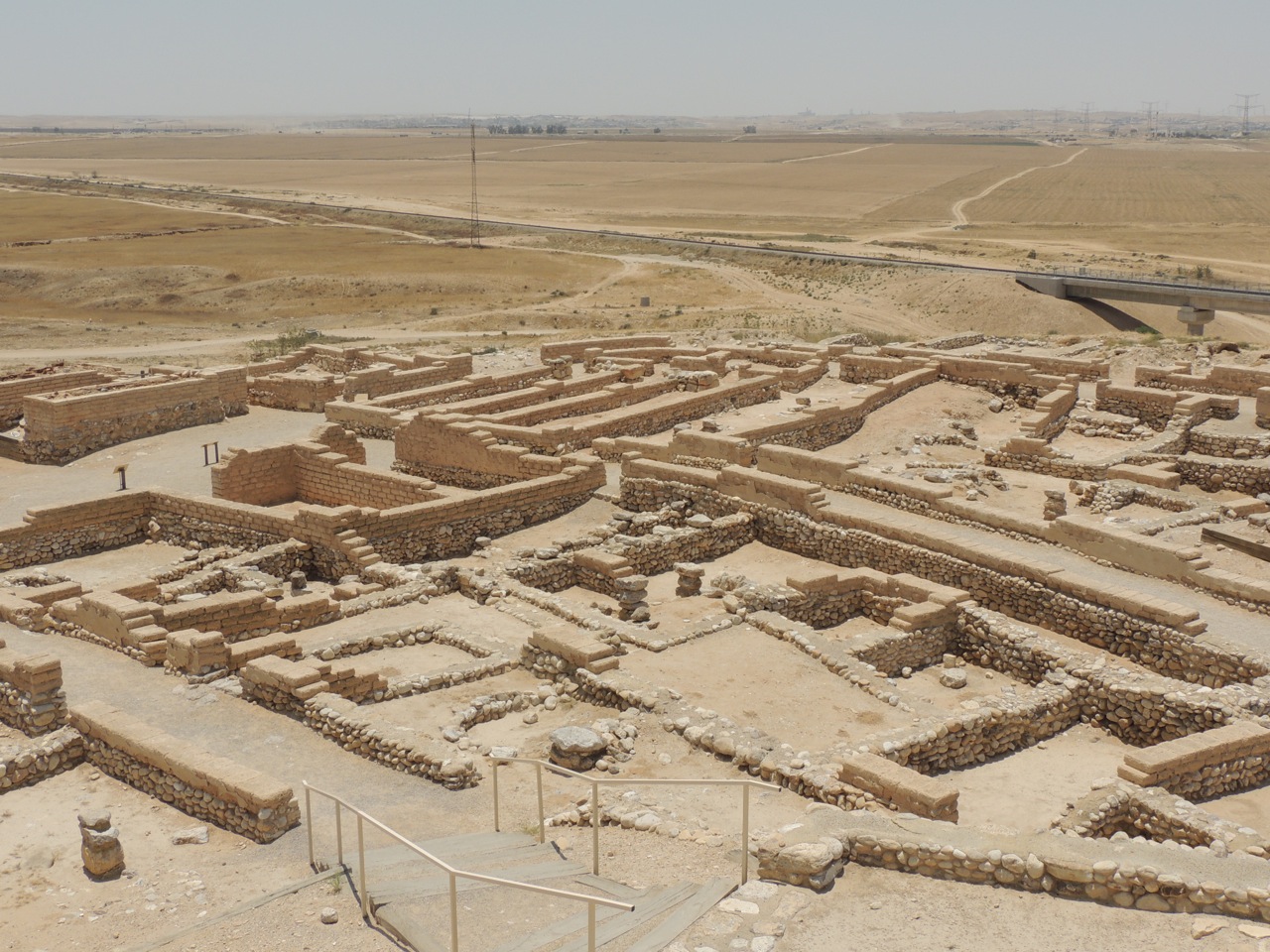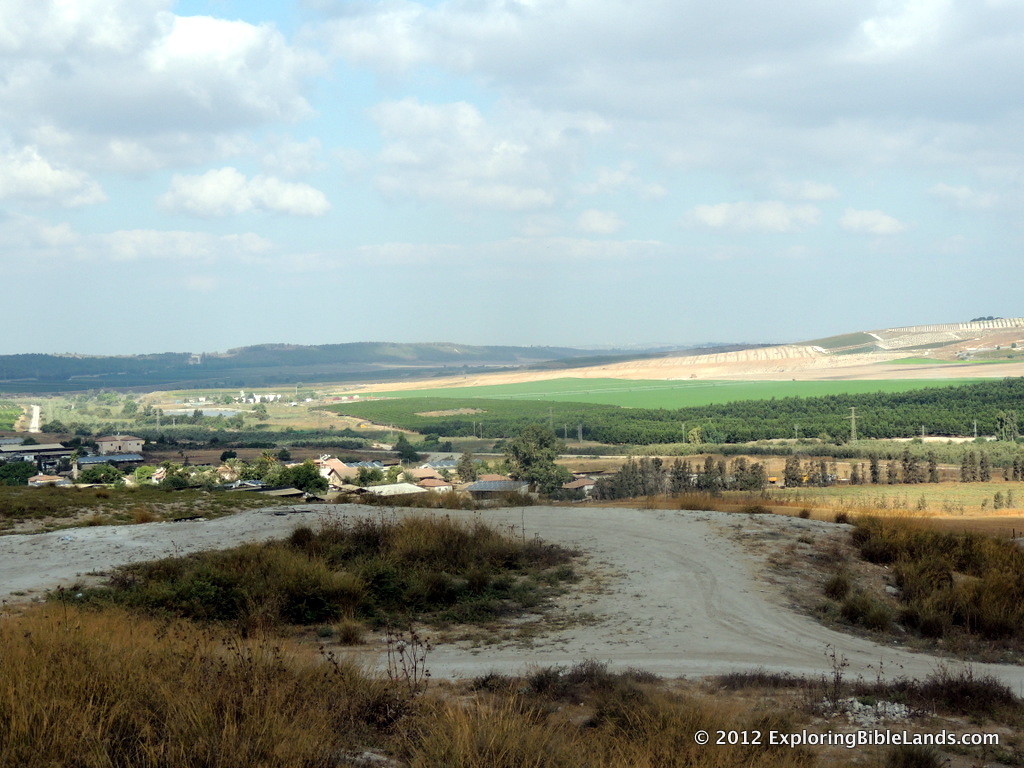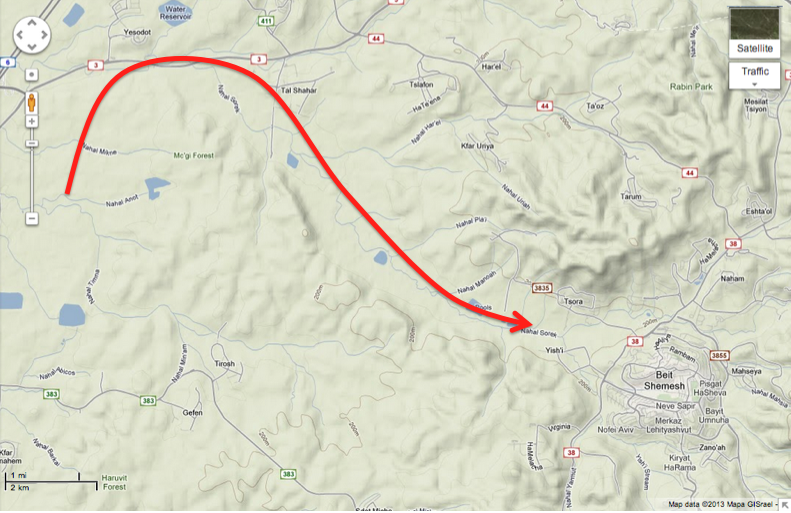The lands of the Bible in this region has four longitudinal zones. There is the Coastal Plain, the Central Mountain Range, the Rift Valley and the Transjordan Plateau. However, there are a few smaller areas sandwiched in between those primary zones. One of the is the Shephelah.
The Shephelah is a small area within the land given to the tribe of Judah with a fertile, rolling plain. Even today, there are plenty of crops growing all over this region. For our interest on this tour, we are interested in the Biblical events that occurred in this area.
We started our day by driving to the Sorek Valley, the stomping grounds of the judge Samson. The site at the eastern end of this valley is Beit Shemesh. We stood at this site and could envision Samson tying the foxes together and setting the fields ablaze. Also, we could see the milk cows dragging and cart behind them carrying the Ark of the Covenant.
 Our next stop was at the Valley of Elah. After you visit this beautiful valley, you will never read the story of David and Goliath the same again. I am continually impressed by the geographical accuracy of the Biblical writer in telling this story. We stood in the valley and reread parts of the story describing those details. Afterwards, everyone went down into the brook to pick up some "small smooth stones" to take home.
Our next stop was at the Valley of Elah. After you visit this beautiful valley, you will never read the story of David and Goliath the same again. I am continually impressed by the geographical accuracy of the Biblical writer in telling this story. We stood in the valley and reread parts of the story describing those details. Afterwards, everyone went down into the brook to pick up some "small smooth stones" to take home.
Lachish was next on our list. Seeing this site helps you understand its strategic importance. You can still see the siege ramp built by the Assyrians as they captured the city. The dig season for this site is going to be starting in about a week. We could see the people beginning to move equipment into place in the gate area. I look forward to hearing what they find.
 After a bit of a drive, we found ourselves at Beersheba. This site sits on the northern edge of the Negev. This is a beautiful site and easy to walk around and see. They have built a tall tower to view the landscape and we had the opportunity to walk through the water tunnel.
After a bit of a drive, we found ourselves at Beersheba. This site sits on the northern edge of the Negev. This is a beautiful site and easy to walk around and see. They have built a tall tower to view the landscape and we had the opportunity to walk through the water tunnel.
Our final stop of the day was at Nebi Samwil, just north of the city of Jerusalem. From this vantage point, you can see the Benjamin Plateau and overlook the city of Gibeon. The sun stood still here at one time, but not today. We took our pictures and then headed toward the hotel.
Our tour is quickly coming to an end. We have one more big day tomorrow before heading to the airport to catch a late-night flight. As I type this, I can hear the songs of the evening call to prayer for the Muslims. And, I can look out my hotel window and see the Jewish people walking home after finishing their prayers by the Western Wall.
I'll try to post tomorrow night, but time and Internet availability my limit the opportunity. But, I'll be back online soon.
Shalom.
 One night, in the city of Timnah in the Sorek Valley, Philistine men impudently answered Sampson’s riddle with the words: “What is sweeter than honey?” Today, that answer is still true, and bees still thrive in the Sorek Valley, just a few meters from the ancient site of Timnah. Luckily, however, their keepers have found more hospitable housing for them than the carcass of a lion.
One night, in the city of Timnah in the Sorek Valley, Philistine men impudently answered Sampson’s riddle with the words: “What is sweeter than honey?” Today, that answer is still true, and bees still thrive in the Sorek Valley, just a few meters from the ancient site of Timnah. Luckily, however, their keepers have found more hospitable housing for them than the carcass of a lion.






